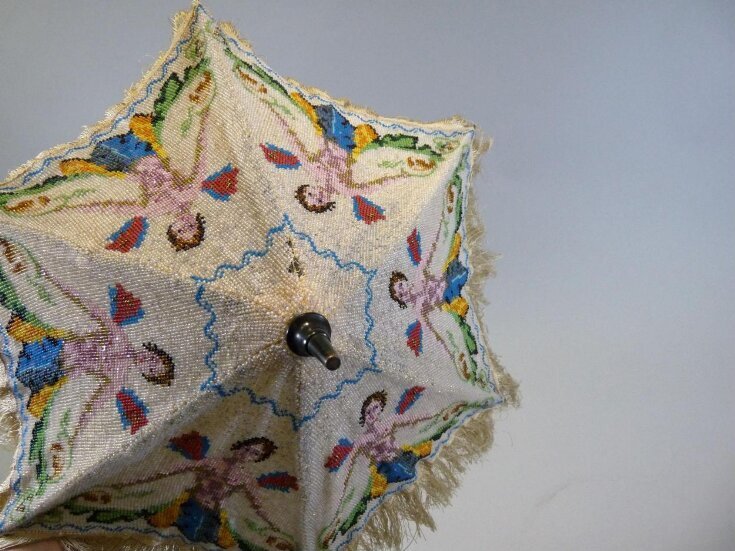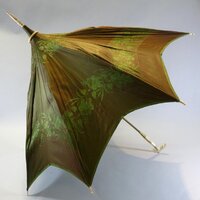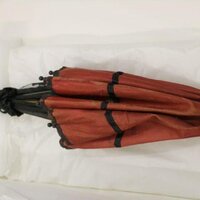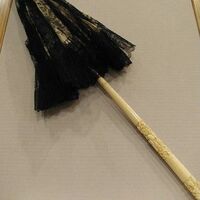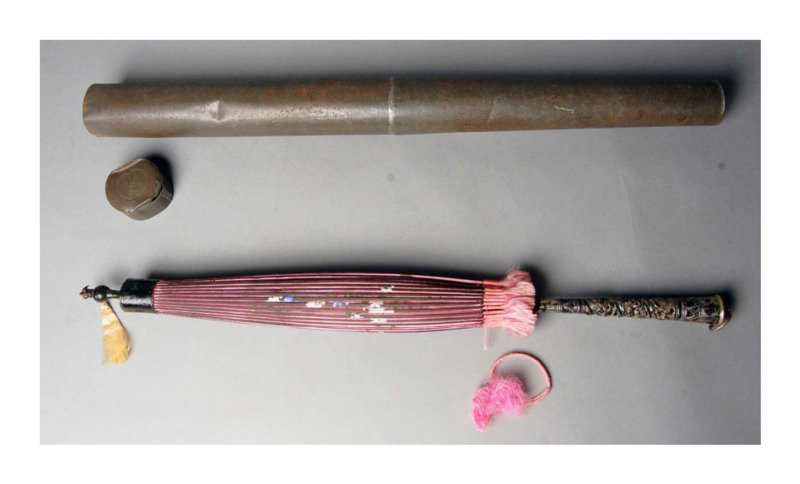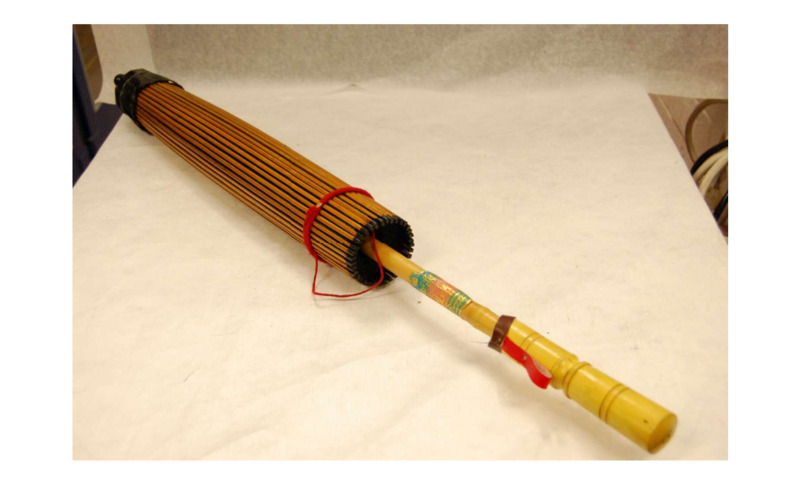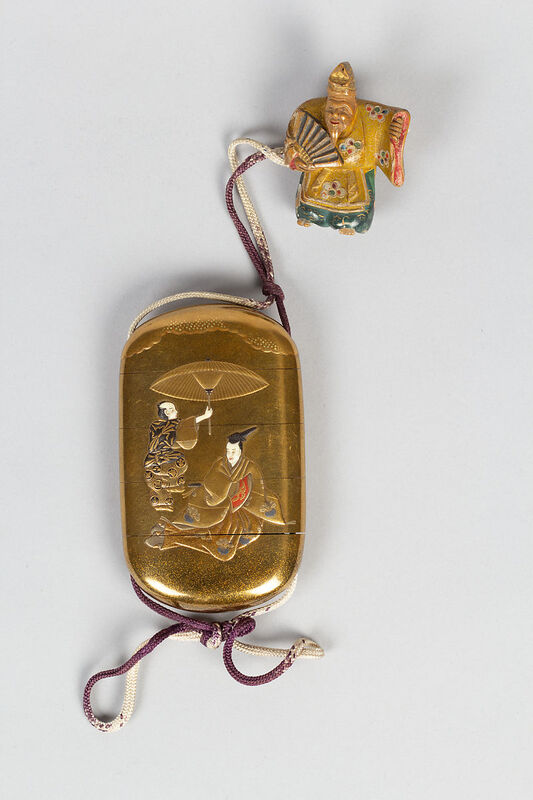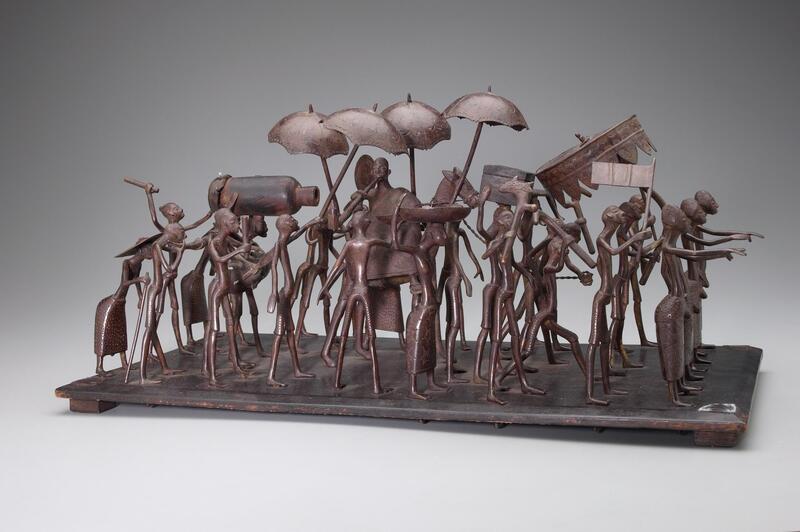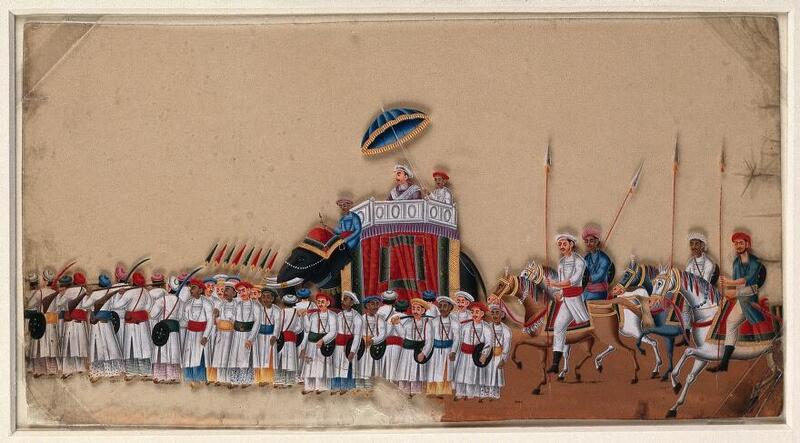18th - 19th Century
During the eighteenth and nineteenth centuries parasols played a central role for women in Victorian British culture. The parasol would be used by women to flirt, tease, and attract the attention of men by using it to hide their faces as they would glance over it with their eyes. Women needed to marry men with money, so there would be considerable financial and social pressure on women to look youthful which made them marriageable. The parasol helped women maintain pale and un-weathered complexions by shading their faces from the sun.
By the earliest decades of the twentieth century, parasols became more fantastic and eye-catching with a array of ribbons, feathers, and bright colors. An example of an eye-catching fringe parasol is shown below with it's intracate needlework and colorful blue, red, yellow, and green threads.
Over time, umbrellas became fashioned with gimmicky elements such as hollowed handles for holding perfumes or writing materials; umbrellas with curtained covers to cover a lady’s bustle; umbrellas with flasks in the handles for collecting water from the curtains; and umbrellas that whistled when opened.
As you look at the parasols, imagine the world at this time. Consider how fashion trends incorporated these parasols. Electricity was introduced into clothing manufacturing and this produced a boom in the ready-to-wear market. Women were enjoying independence and employment. The fashion trend for women would develop. They would wear a vertical puff sleeve, skirts were bell-shaped and fit smoothly over their hips. A straight-front corset was designed which forced a women’s chest upward. There would be morning, afternoon, and evening wear. The men’s fashion consisted of a slightly more relaxed trouser. Men would wear a frock coat. They wore a lounge or sack suit that had a single-breasted jacket that was worn by upper-class men. White ties and tailcoats was worn in the evenings with heavily starched white dress shirts.
The items below are from Asia and Africa.
The parasol with the container and lid was made in Burma. This parasol is from before World War II and it served throughout a war. The next parasol was used by monks and is made of bamboo and cloth that was oiled and lacquered. It was sewn with a net of colored threads. This parasol has a scarlet guard that keeps it tightly closed. The gold lacquer case is from Japan and depicts a coutier holding a red fan, he is seated beneath an umbrella that is being held by a Japanese Noh dancer.
The items show below depict a processions with each image showing a high ranking man with parasol bearers. While the two images are from differnt places, the umbrella still represents a higher status.
The image to the left is a sculpture from Benin, West Africa. The noble man in the center of the sculpture is possibly King Wegbaja (1645 C.E. to 1685 C.E.). The procession consists of about 20 people, including the king. There are umbrealla bearers, stools, trumpets and drums.
The image to the right is a painting by an Indian artist. It is of a Indian man sitting on a elephant. He has a driver and he has an umbrella bearer who is holding a large blue and gold fringe umbrealla. This signifies that the man under the umbreall is important in this processiong.
List of pages:
